Creating an adventure game like Cross of the Dutchman involves the creation of many different characters. In previous articles, we've demonstrated how the creation process takes place, however this article takes a more detailed view at the creation of Grutte Pier in Cross of the Dutchman!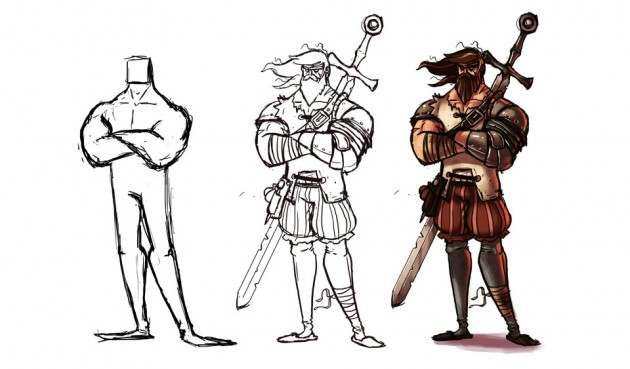 Fist, sketches are made to give an impression of the type of character. These sketches are discussed between the art director and producer to make sure they match the story and direction of the game. This phase takes a couple of hours to complete, depending on whether we're working on a leading character or a villager NPC.
Fist, sketches are made to give an impression of the type of character. These sketches are discussed between the art director and producer to make sure they match the story and direction of the game. This phase takes a couple of hours to complete, depending on whether we're working on a leading character or a villager NPC.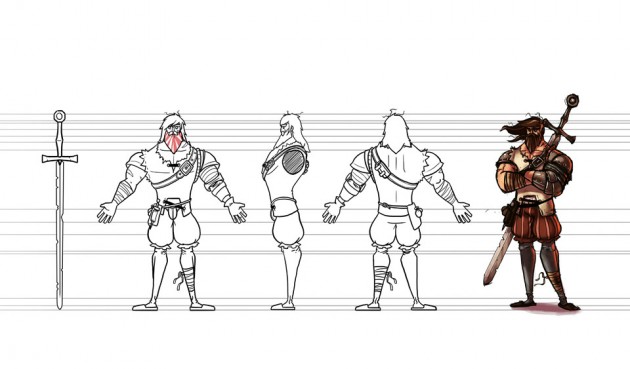 Once the design is approved, the character is drawn posed from different perspectives, as well as a colored version. This helps the 3D artist create the right proportions for each individual character. Creating these drawings takes about 2 hours to complete, and is done by the art director.
Once the design is approved, the character is drawn posed from different perspectives, as well as a colored version. This helps the 3D artist create the right proportions for each individual character. Creating these drawings takes about 2 hours to complete, and is done by the art director.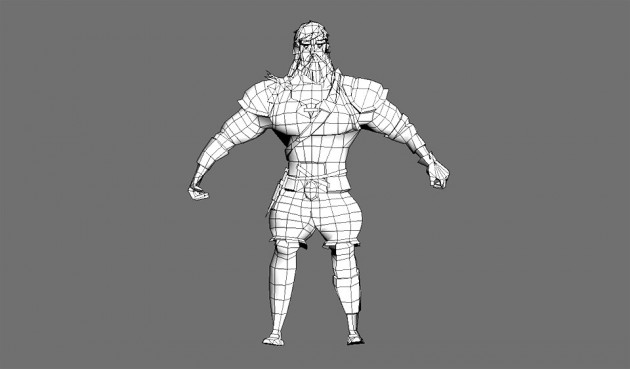 At this stage, the 3D Artist takes over, and starts building the 3D Mesh for the character. Each artists has his or her own techniques for creating a character, but it is really up to the complexity of the character that decides how long this process takes. It can be anywhere from a couple of hours to a full working day.
At this stage, the 3D Artist takes over, and starts building the 3D Mesh for the character. Each artists has his or her own techniques for creating a character, but it is really up to the complexity of the character that decides how long this process takes. It can be anywhere from a couple of hours to a full working day.
When the mesh has been completed, the process of unwrapping starts. This is a process where each part of a character is flattened onto a sheet. This may sound weird but it allows a 2D artist to start creating the textures for a character. One of the difficulties a 3D artists faces when unwrapping is that all assets need to fit within a square. Because texture sizes usually are increased by powers of 2, it means that textures can be created in steps of 256x256, 512x512 or 1024x1024 pixels (and lower or higher if required). We use high-res textures for characters, and lower resolution textures for less important objects such as scene props.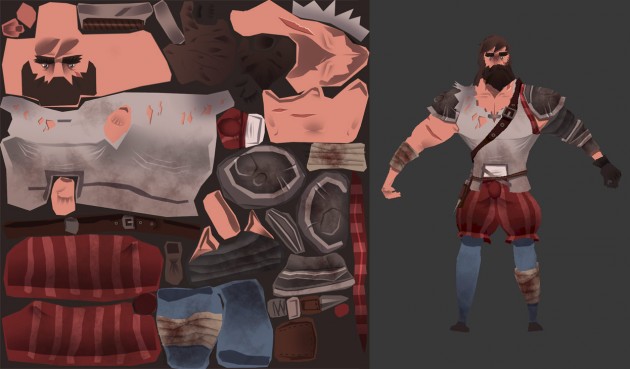 The 3D artist is done for a while, and it is now up to the 2D artist to create the textures using the square map (or UV Map). In Cross of the Dutchman, we add lighting detail to textures, because it allows us to generate a lot of detail that we would not be able to achieve when using conventional lighting methods. Also, at this stage it is possible to create normal maps or shaders that give depth or gloss to specific surfaces, yet within this project we do not rely on such techniques mainly because of the chosen artistic direction, but also because of the huge amount of additional work it generates.
The 3D artist is done for a while, and it is now up to the 2D artist to create the textures using the square map (or UV Map). In Cross of the Dutchman, we add lighting detail to textures, because it allows us to generate a lot of detail that we would not be able to achieve when using conventional lighting methods. Also, at this stage it is possible to create normal maps or shaders that give depth or gloss to specific surfaces, yet within this project we do not rely on such techniques mainly because of the chosen artistic direction, but also because of the huge amount of additional work it generates.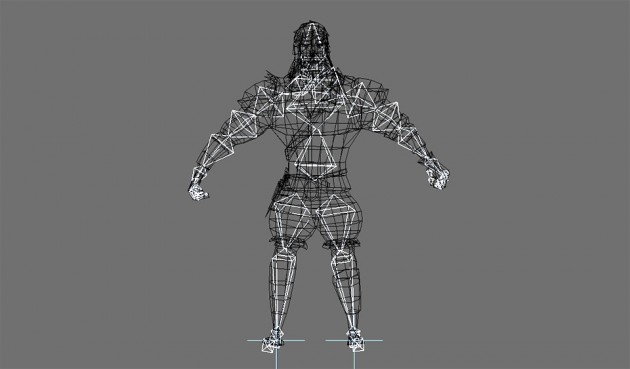 So, we have our model and texture, but we don't see any movement just yet. This is where the assets are being handed over to the animator, who starts the process of "rigging" and animating the character. Rigging is a process where we give our 3D asset the means to move around. Really it means adding arms, legs, fingers and a backbone to allow the character to move. Animation itself is much like moving the bones in the character in a way similar to how a puppeteer would do it. There are different ways of animating 3D models, but for now we are sticking with "keyframe" animations.
So, we have our model and texture, but we don't see any movement just yet. This is where the assets are being handed over to the animator, who starts the process of "rigging" and animating the character. Rigging is a process where we give our 3D asset the means to move around. Really it means adding arms, legs, fingers and a backbone to allow the character to move. Animation itself is much like moving the bones in the character in a way similar to how a puppeteer would do it. There are different ways of animating 3D models, but for now we are sticking with "keyframe" animations.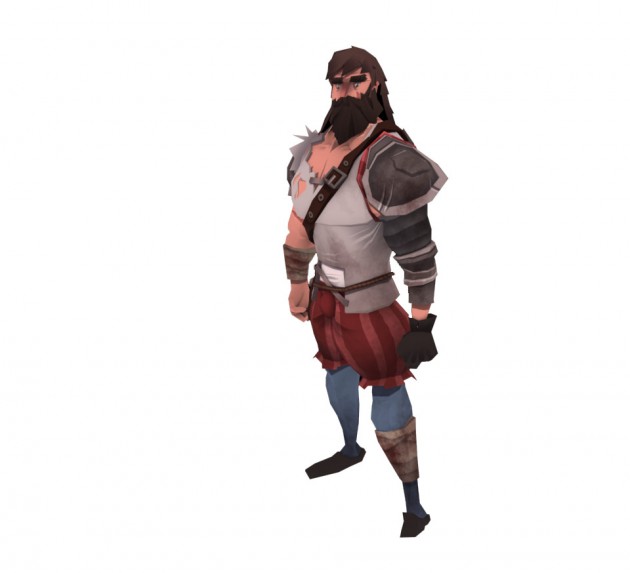 That's it! Our character is done! I hope you liked this article, but do speak up if you want us to go more in-depth in any of these subjects!
That's it! Our character is done! I hope you liked this article, but do speak up if you want us to go more in-depth in any of these subjects!
Read the original post on www.crossofthedutchman.com
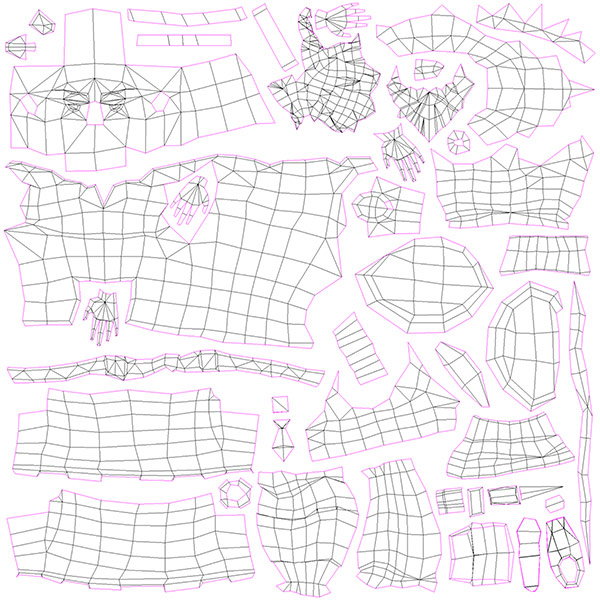





thanks for the tutorial, the outcome and especially the art-style looks great!
Indeed, nice one!
It's a quick way to explain things. What I'm missing in the briefing and tutorial is the fact that everything in game-creation is iteration. For example, your art director is your senior concept artist and therefor controls his own work. Had he had an art director, he would have told him that humans have hips and to check his anatomy. The entire lower part of the body doesn't match the torso and lacks volume, except where it is unwanted. Iteration would have helped create a better low poly model.
If I'm not mistaken your rig isn't symmetrical either, so there are some small dohickeys. It also seems like there is not enough subdivision in the knee area, and I'm not sure if you modeled the shoulder armor seperately and merged the model afterwards (as it should be done with hard surface). As it is you might have trouble weighting. Also, most people model at least head and body separately to have more UV space to use on the detail skin.
It's a good tutorial, however the model is very basic, you should make sure everything is right about it, before recommending examples that may make people wonder if they are doing it right.
what software do you use to do your modeling and are you looking to add on more programmers to your team.
Hey flavur, we use 3ds max.
Right now we're aren't looking to add programmers to the Cross of the Dutchman project. However for some of our other projects we might need additional programmers. You can always send your resume to us.
Keep in mind that our HQ is located in the Netherlands and we have a small office in Dallas, TX. We prefer working with people on either of these locations.
Cool thanks for the reply are you're other projects listed on your website?
Thanks guys! We appreciate all your feedback. It isn't a tutorial really, but rather the process of how we created our hero. We know it isn't perfect and we already came across some downsided of the used rig. We just like to share our experiences with our community. We might do a new feature article after we finish up our final hero.
wow, good article
Great article. Ive always have a hard time converting my 2D art into 3D models, that's why my current project is 2.5D only >_<